#Indian King History
Text
Masterlist
इन्धे राजा समर्यो नमोभिर्यस्य प्रतीकमाहुतं घृतेन।
नरो हव्येभिरीळते सबाध आग्निरगग्र उषसामशोचि।। ७.००८.०१
The king whose face is decked with oil is kindled with homage offered by his faithful servant. The men, the priests adore him with oblations. Agni hath shone forth when the dawn is breaking.



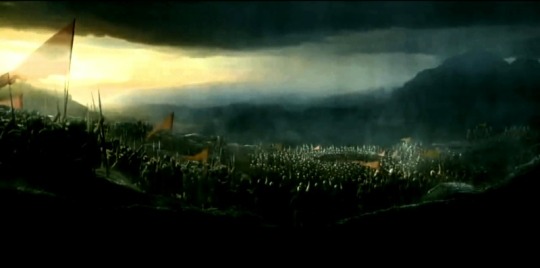




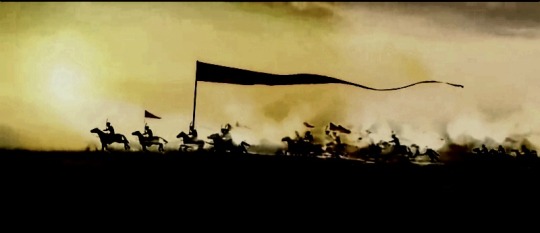
I'm gonna start a series about the dasarajna yuddha, popularly known as battle of ten kings. Most historians call it a prototype of Mahabharat while some want to make it in into a third epic. This is also the world's first recorded war. In this series i will try to dig up verses from rigveda and try to compile them with translations and my two cents.
If you can provide better translations pls do not hesitate to reach out or correct me
Since I do not have a seperate taglist i will tag everyone and anyone who does not want to be notified about this series can tell me and i won't tag them in further parts. Conversely, if you want to be tagged pls tell me.
Tags : : @thewinchestergirl1208 @budugu @yehsahihai @vaijayantheee @chaanv @rambheemisgoated @iam-siriuslysher-lokid @asarcasticcaffeinatedslytherin @mizutaama @jeonmahi1864 @bromance-minus-the-b @ronaldofandom @sabi5 @saanjh-sakhi @maraudersbitchesassemble @whyismynamecommon @nyotamalfoy @rambheemlove @lite-teesko @jjwolfesworld @shreyalokesh @amnmich
#rig veda#dasarajna yuddha#battle of ten kings#indian history#prototype#ancient india#stories from vedas#desiblr#desi tumblr#mahabharat
77 notes
·
View notes
Text
A series of videos about arguably the most important war in American history, or at least the war most important to relations between Anglo-Americans and the natives.
If you don't want to watch the whole thing, I advise at least watching the first three videos. (Or the second and third; it's easy to skip the introduction, but don't skip the corrections.)
10 notes
·
View notes
Text

Who was Ranjit Singh? Why was he famous? Everything about Maharaja Ranjit Singh!
Ranjit Singh was the 1st Maharaja of the sovereign independent Sikh Kingdom of Punjab. He was born in 1780. In his childhood, he lost his left eye’s sight due to smallpox. He was also known as Sher-e-Punjab meaning Lion of Punjab. While he was a teenager, he along with his father fought many wars with the Afghans.
2 notes
·
View notes
Text
Happy National Indigenous Peoples’ Day!
Here are some photos :D



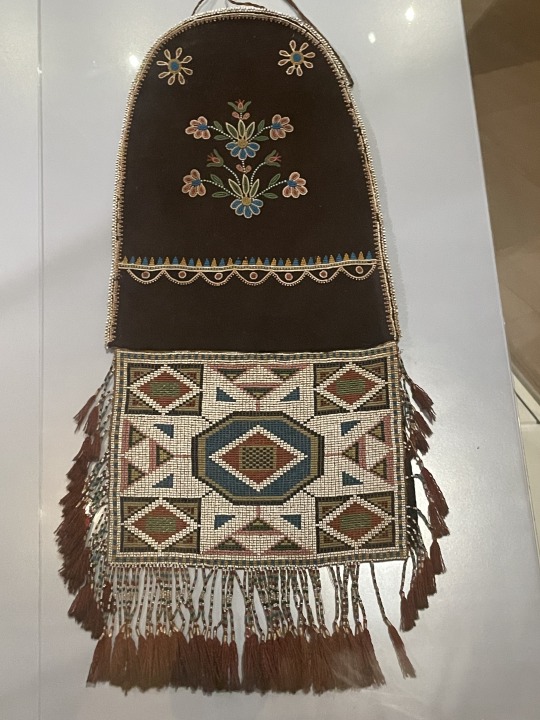
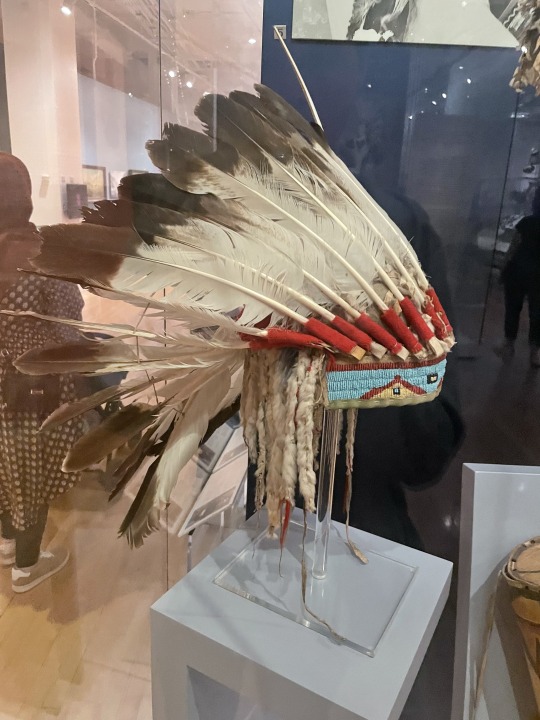


Photos: MMIR demonstration in Vancouver, MMIR art exposition at Ashbridges Bay in Toronto, Feathers I found at a sacred site with an Assumption sash and a necklace with Swxwú7mesh Lil7watúl art and a copy of Indians on Vacation by Thomas King. Métis beadwork and Sitting Bull’s headdress at the ROM. Public art display by Chief Lady Bird at Kew Gardens in Toronto.
#indigenous#NDN#ndn art#métis#first nations#inuk#mmiwg2s#mmir#toronto#vancouver#national indigenous history month#national indigenous peoples’ day#Indians on Vacation#thomas king#Chief Lady Bird#sitting bull#Swxwú7mesh Lil7watúl#srd
10 notes
·
View notes
Text
Let's watch a biopic about AN EPIC historical person and obsess over them for the next couple of days
Yes I watched Prithviraj, he is now on the list after Jodhaa-Akbar, Bhagat Singh, Alluri Sitaramaraju (i watched the old one lmao), Shivaji and Krishnadeva Raya
#epic historical people#indian history i guess lmao#biopics#prithviraj!!!#one of my ultimate fave kings#mira's movies
2 notes
·
View notes
Text

all RIGHT:
Why You're Writing Medieval (and Medieval-Coded) Women Wrong: A RANT
(Or, For the Love of God, People, Stop Pretending Victorian Style Gender Roles Applied to All of History)
This is a problem I see alllll over the place - I'll be reading a medieval-coded book and the women will be told they aren't allowed to fight or learn or work, that they are only supposed to get married, keep house and have babies, &c &c.
If I point this out ppl will be like "yes but there was misogyny back then! women were treated terribly!" and OK. Stop right there.
By & large, what we as a culture think of as misogyny & patriarchy is the expression prevalent in Victorian times - not medieval. (And NO, this is not me blaming Victorians for their theme park version of "medieval history". This is me blaming 21st century people for being ignorant & refusing to do their homework).
Yes, there was misogyny in medieval times, but 1) in many ways it was actually markedly less severe than Victorian misogyny, tyvm - and 2) it was of a quite different type. (Disclaimer: I am speaking specifically of Frankish, Western European medieval women rather than those in other parts of the world. This applies to a lesser extent in Byzantium and I am still learning about women in the medieval Islamic world.)
So, here are the 2 vital things to remember about women when writing medieval or medieval-coded societies
FIRST. Where in Victorian times the primary axes of prejudice were gender and race - so that a male labourer had more rights than a female of the higher classes, and a middle class white man would be treated with more respect than an African or Indian dignitary - In medieval times, the primary axis of prejudice was, overwhelmingly, class. Thus, Frankish crusader knights arguably felt more solidarity with their Muslim opponents of knightly status, than they did their own peasants. Faith and age were also medieval axes of prejudice - children and young people were exploited ruthlessly, sent into war or marriage at 15 (boys) or 12 (girls). Gender was less important.
What this meant was that a medieval woman could expect - indeed demand - to be treated more or less the same way the men of her class were. Where no ancient legal obstacle existed, such as Salic law, a king's daughter could and did expect to rule, even after marriage.
Women of the knightly class could & did arm & fight - something that required a MASSIVE outlay of money, which was obviously at their discretion & disposal. See: Sichelgaita, Isabel de Conches, the unnamed women fighting in armour as knights during the Third Crusade, as recorded by Muslim chroniclers.
Tolkien's Eowyn is a great example of this medieval attitude to class trumping race: complaining that she's being told not to fight, she stresses her class: "I am of the house of Eorl & not a serving woman". She claims her rights, not as a woman, but as a member of the warrior class and the ruling family. Similarly in Renaissance Venice a doge protested the practice which saw 80% of noble women locked into convents for life: if these had been men they would have been "born to command & govern the world". Their class ought to have exempted them from discrimination on the basis of sex.
So, tip #1 for writing medieval women: remember that their class always outweighed their gender. They might be subordinate to the men within their own class, but not to those below.
SECOND. Whereas Victorians saw women's highest calling as marriage & children - the "angel in the house" ennobling & improving their men on a spiritual but rarely practical level - Medievals by contrast prized virginity/celibacy above marriage, seeing it as a way for women to transcend their sex. Often as nuns, saints, mystics; sometimes as warriors, queens, & ladies; always as businesswomen & merchants, women could & did forge their own paths in life
When Elizabeth I claimed to have "the heart & stomach of a king" & adopted the persona of the virgin queen, this was the norm she appealed to. Women could do things; they just had to prove they were Not Like Other Girls. By Elizabeth's time things were already changing: it was the Reformation that switched the ideal to marriage, & the Enlightenment that divorced femininity from reason, aggression & public life.
For more on this topic, read Katherine Hager's article "Endowed With Manly Courage: Medieval Perceptions of Women in Combat" on women who transcended gender to occupy a liminal space as warrior/virgin/saint.
So, tip #2: remember that for medieval women, wife and mother wasn't the ideal, virgin saint was the ideal. By proving yourself "not like other girls" you could gain significant autonomy & freedom.
Finally a bonus tip: if writing about medieval women, be sure to read writing on women's issues from the time so as to understand the terms in which these women spoke about & defended their ambitions. Start with Christine de Pisan.
I learned all this doing the reading for WATCHERS OF OUTREMER, my series of historical fantasy novels set in the medieval crusader states, which were dominated by strong medieval women! Book 5, THE HOUSE OF MOURNING (forthcoming 2023) will focus, to a greater extent than any other novel I've ever yet read or written, on the experience of women during the crusades - as warriors, captives, and political leaders. I can't wait to share it with you all!
#watchers of outremer#medieval history#the lady of kingdoms#the house of mourning#writing#writing fantasy#female characters#medieval women#eowyn#the lord of the rings#lotr#history#historical fiction#fantasy#writing tip#writing advice
29K notes
·
View notes
Text
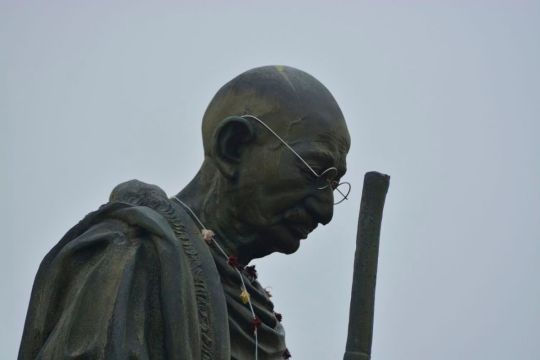
View On WordPress
#activism#anti-war#antiwar#hinduism#history#indian opinion#jr.#love#mahatma gandhi#martin luther king#nelson mandela#peace#respect#spirituality
0 notes
Text
Sri Krishna Devaraya- Great last South Indian king- history forgot him…but remembers Terrorist Tipu Sultan
Sri Krishna Devaraya
My state Karnataka celebrates the birth Anniversary of a monster like Tippu Sultan but today is birth anniversary of greatest king of medieval history Sri Krishna Devaraya and there is no celebration either in Telugu states or in Karnataka where his capital Hampi is locatedSri Krishna Devaraya was last hindu emperor of the south and he was a versatile geniusHis greatness…

View On WordPress
0 notes
Text
Successful Coaches in IPL: Who is the most successful coach in IPL history? who play an important role behind the scenes
Successful Coaches in IPL: Who is the most successful coach in IPL history? who play an important role behind the scenes
5 Most Successful Coaches in IPL history: Indian Premier League has provided a platform for young cricket players to showcase their talent. It has been 15 years since this prestigious T20 league of India started. During this, many players from all over the world have left their mark. This league, which was organized for the first time in the year 2008, has greatly influenced the youth. Apart from…
View On WordPress
#5 most successful coaches in IPL history#Chennai Super Kings#Coach#coaches#csk#DC#delhi capitals#hindi ipl news#history#important#Indian Premier League#indian premier league 2023#IPL#ipl 16#ipl 2023#ipl coach#ipl most successful coach#ipl most successful coach stephen fleming#ipl news#ipl news in hindi#ipl successful coach#kkr#kolkata knight riders#Mahela Jayawardene#Most successful coach of IPL#Mumbai Indians#my#play#Ricky Ponting#role
0 notes
Text
Hello friends!
I’m back again with another video, this time it’s on something I believe is very serious and important. I made a video on all the books I have read so far from indigenous authors, I have learned so much and would love if you checked them out! It’s important to educate yourself 💗💗love ya!
youtube
#book reccomendation#youtube#indigenous authors#indigenous voices#braiding sweetgrass#from bear rock mountain#the inconvenient Indian#seven fallen feathers#in my own moccasins#all the relations finding the path forward#Tanya Talaga#Hellen Knott#Thomas King#Antoine Mountain#Robin Wall Kimmerer#educate#canadian history
1 note
·
View note
Text
#history of jamnagar#all kings of jamnagar#population of jamnagar#culture of jamnagar#historical buildings in jamnagar#Indian forces in jamnagar#must visit places nearby jamnagar#ayurveda university#business in jamnagar#aapdujamnagar
0 notes
Text
In addition to my Monkey Man post from earlier, the always kind & sweet Aparna Verma (author of The Phoenix King, check it out) asked that I do a thread on Hijras, & more of the history around them, South Asia, mythology (because that's my thing), & the positive inclusion of them in Monkey Man which I brought up in my gushing review.
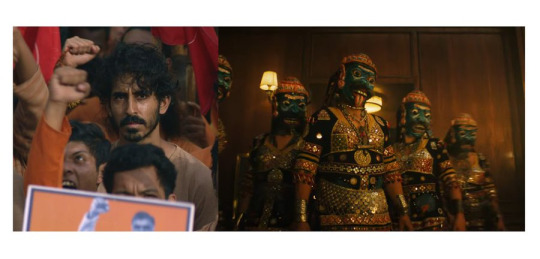
Hijra: They are the transgender, eunuch, or intersex people in India who are officially recognized as the third sex throughout most countries in the Indian subcontinent. The trans community and history in India goes back a long way as being documented and officially recognized - far back as 12th century under the Delhi Sultanate in government records, and further back in our stories in Hinduism. The word itself is a Hindi word that's been roughly translated into English as "eunuch" commonly but it's not exactly accurate.
Hijras have been considered the third sex back in our ancient stories, and by 2014 got official recognition to identify as the third gender (neither male or female) legally. Pakistan, Nepal, Bangladesh, and India have accepted: eunuch, trans, intersex people & granted them the proper identification options on passports and other government official documents.
But let's get into some of the history surrounding the Hijra community (which for the longest time has been nomadic, and a part of India's long, rich, and sometimes, sadly, troubled history of nomadic tribes/people who have suffered a lot over the ages. Hijras and intersex people are mentioned as far back as in the Kama Sutra, as well as in the early writings of Manu Smriti in the 1st century CE (Common Era), specifically said that a third sex can exist if possessing equal male and female seed.
This concept of balancing male/female energies, seed, and halves is seen in two places in South Asian mythos/culture and connected to the Hijra history.
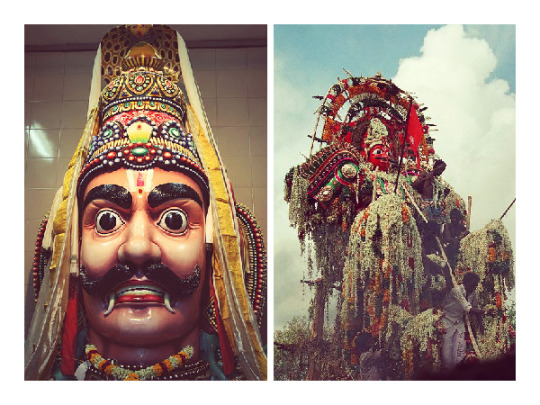
First, we have Aravan/Iravan (romanized) - who is also the patron deity of the transgender community. He is most commonly seen as a minor/village deity and is depicted in the Indian epic Mahabharata. Aravan is portrayed as having a heroic in the story and his self-sacrifice to the goddess Kali earns him a boon.

He requests to be married before his death. But because he is doomed to die so shortly after marriage, no one wants to marry him.
No one except Krishna, who adopts his female form Mohini (one of the legendary temptresses in mythology I've written about before) and marries him. It is through this union of male, and male presenting as female in the female form of Mohini that the seed of the Hijras is said to begun, and why the transgender community often worships Aravan and, another name for the community is Aravani - of/from Aravan.
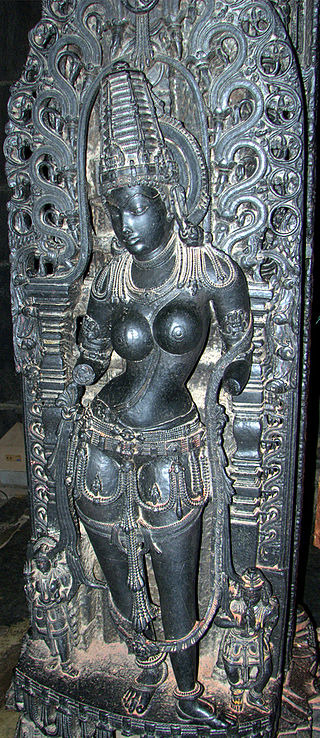
But that's not the only place where a gender non conforming divine representation can be seen. Ardhanarishvara is the half female form of lord Shiva, the destroyer god.
Shiva combines with his consort Parvarti and creates a form that represents the balancing/union between male/female energies and physically as a perfectly split down the middle half-male half-female being. This duality in nature has long been part of South Asian culture, spiritual and philosophical beliefs, and it must be noted the sexuality/gender has often been displayed as fluid in South Asian epics and the stories. It's nothing new.

Many celestial or cosmic level beings have expressed this, and defied modern western limiting beliefs on the ideas of these themes/possibilities/forms of existence.
Ardhanarishvara signifies "totality that lies beyond duality", "bi-unity of male and female in God" and "the bisexuality and therefore the non-duality" of the Supreme Being.
Back to the Hijra community.
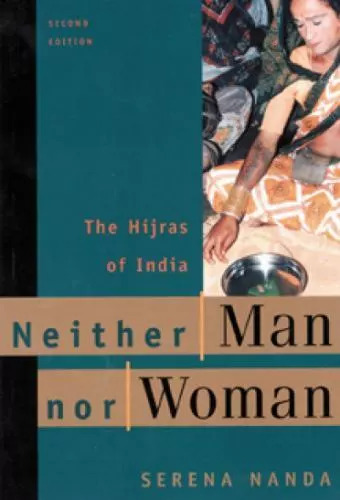
They have a complex and long history. Throughout time, and as commented on in the movie, Monkey Man, the Hijra community has faced ostracization, but also been incorporated into mainstream society there. During the time of the Dehli Sultanate and then later the Mughal Empire, Hijras actually served in the military and as military commanders in some records, they were also servants for wealthy households, manual laborers, political guardians, and it was seen as wise to put women under the protection of Hijras -- they often specifically served as the bodyguards and overseers of harems. A princess might be appointed a Hijra warrior to guard her.

But by the time of British colonialism, anti-Hijra laws began to come in place folded into laws against the many nomadic tribes of India (also shown in part in Monkey Man with Kid (portrayed by Dev Patel) and his family, who are possibly
one of those nomadic tribes that participated in early theater - sadly by caste often treated horribly and relegated to only the performing arts to make money (this is a guess based on the village play they were performing as no other details were given about his family).
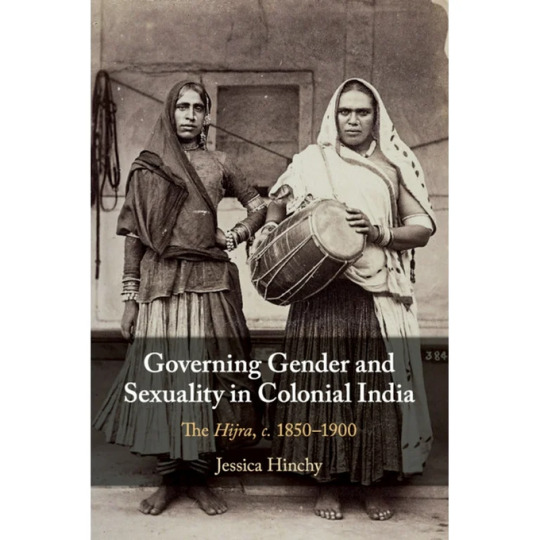
Hijras were criminalized in 1861 by the Indian Penal Code enforced by the British and were labeled specifically as "The Hijra Problem" -- leading to an anti-Hijra campaign across the subcontinent with following laws being enacted: punishing the practices of the Hijra community, and outlawing castration (something many Hijra did to themselves). Though, it should be noted many of the laws were rarely enforced by local Indian officials/officers. But, the British made a point to further the laws against them by later adding the Criminal Tribes Act in 1871, which targeted the Hijra community along with the other nomadic Indian tribes - it subjected them to registration, tracking/monitoring, stripping them of children, and their ability to sequester themselves in their nomadic lifestyle away from the British Colonial Rule.
Today, things have changed and Hijras are being seen once again in a more positive light (though not always and this is something Monkey Man balances by what's happened to the community in a few scenes, and the heroic return/scene with Dev and his warriors). All-hijra communities exist and sort of mirror the western concept of "found families" where they are safe haven/welcoming place trans folks and those identifying as intersex.
These communities also have their own secret language known as Hijra Farsi, which is loosely based on Hindi, but consists of a unique vocabulary of at least 1,000 words.
As noted above, in 2014, the trans community received more legal rights.
Specifically: In April 2014, Justice K. S. Radhakrishnan declared transgender to be the third gender in Indian law in National Legal Services Authority v. Union of India.
Hijras, Eunuchs, apart from binary gender, be treated as "third gender" for the purpose of safeguarding their rights under Part III of our Constitution and the laws made by the Parliament and the State Legislature. Transgender persons' right to decide their self-identified gender is also upheld and the Centre and State Governments are directed to grant legal recognition of their gender identity such as male, female or as third gender.
I've included some screenshots of (some, not all, and certainly not the only/definitive reads) books people can check out about SOME of the history. Not all again. This goes back ages and even our celestial beings/creatures have/do display gender non conforming ways.
There are also films that touch on Hijra history and life. But in regards to Monkey Man, which is what started this thread particularly and being asked to comment - it is a film that positively portrayed India's third sex and normalized it in its depiction. Kid the protagonist encounters a found family of Hijras at one point in the story (no spoilers for plot) and his interactions/acceptance, living with them is just normal. There's no explaining, justifying, anything to/for the audience. It simply is. And, it's a beautiful arc of the story of Kid finding himself in their care/company.
#hijra#trans representation#monkey man#dev patel#transgender#trans rights#trans rights are human rights#third sex#indian history#indian culture#colonialism#imperialism#south Asian mythos#South Asian myths#Aravan#Iravan#Mahabharata#hindu mythology#hindu gods#kali goddess#krishna#hindu mythology art#Ardhanarishvara#Shiva#Parvarti#sexuality#gender fluid#fluid sexuality#trans community#transgender rights
454 notes
·
View notes
Text
The Best News of Last Week - June 20, 2023
🐕 - Meet Sheep Farm's Newest Employee: Collie Hired After Ejection from Car!
1. Border Collie ejected from car during Sunday crash found on sheep farm, herding sheep

Tilly, the 2-year-old Border Collie who was ejected from a car Sunday during a crash, has been found. He was found on a sheep farm, where he had apparently taken up the role of sheep herder.
According to Tilly's owner, he has lost some weight since Sunday's crash and is now drinking lots of water but is otherwise healthy.
2. After 17-Year Absence, White Rhinos Return to the Democratic Republic of the Congo
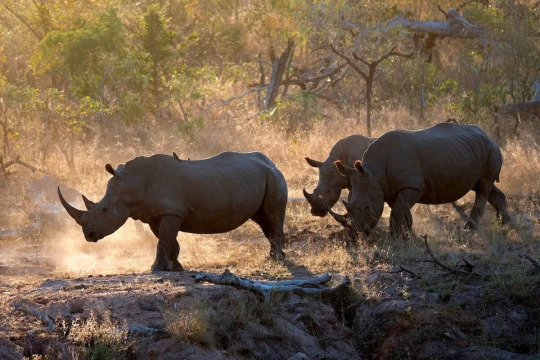
The Democratic Republic of the Congo (DRC) recently welcomed the reintroduction of 16 southern white rhinoceroses to Garamba National Park, according to officials. The last wild northern white rhino was poached there in 2006.
The white rhinos were transported to Garamba, which lies in the northeastern part of the country, from a South African private reserve. In the late 19th century, the southern white rhino subspecies was believed to be extinct due to poaching until a population of fewer than 100 was discovered in South Africa in 1895, according to WWF.
3. UK to wipe women’s historic convictions for homosexuality

Women with convictions for some same-sex activity in the United Kingdom can apply for a pardon for the first time, the Home Office has announced.
The Home Office is widening its scheme to wipe historic convictions for homosexual activity more than a decade after the government allowed applications for same-sex activity offences to be disregarded.
It means anyone can apply for a pardon if they have been convicted or cautioned for any same-sex activity offences that have been repealed or abolished.
4. Study shows human tendency to help others is universal

A new study on the human capacity for cooperation suggests that, deep down, people of diverse cultures are more similar than you might expect. The study, published in Scientific Reports, shows that from the towns of England, Italy, Poland, and Russia to the villages of rural Ecuador, Ghana, Laos, and Aboriginal Australia, at the micro scale of our daily interaction, people everywhere tend to help others when needed.
5. In a First, Wind and Solar Generated More Power Than Coal in U.S.

Wind and solar generated more electricity than coal through May, an E&E News review of federal data shows, marking the first time renewables have outpaced the former king of American power over a five-month period.
The milestone illustrates the ongoing transformation of the U.S. power sector as the nation races to install cleaner forms of energy to reduce greenhouse gas emissions from fossil fuels.
6. Iceland becomes latest country to ban conversion therapy

Lawmakers in Iceland on June 9 approved a bill that will ban so-called conversion therapy in the country.
Media reports note 53 members of the Icelandic Parliament voted for the measure, while three MPs abstained. Hanna Katrín Friðriksson, an MP who is a member of the Liberal Reform Party, introduced the bill.
7. The temple feeding 100,000 people a day
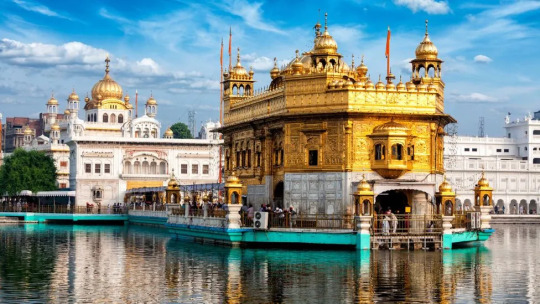
Amritsar, the north Indian city known for its Golden Temple and delicious cuisine, is also renowned for its spirit of generosity and selfless service. The city, founded by a Sikh guru, embodies the Sikh tradition of seva, performing voluntary acts of service without expecting anything in return.
This spirit of giving extends beyond the temple walls, as the Sikh community has shown immense compassion during crises, such as delivering oxygen cylinders during the COVID-19 pandemic. At the heart of Amritsar's generosity is the Golden Temple's langar, the world's largest free communal kitchen, serving 100,000 people daily without discrimination. Despite a history marred by tragic events, Amritsar continues to radiate kindness, love, and generosity.
----
That's it for this week :)
This newsletter will always be free. If you liked this post you can support me with a small kofi donation:
BUY ME A COFFEE ❤️
Also don’t forget to reblog.
1K notes
·
View notes
Text
Why Gandhi is a piece of shit and you should hate him.
Mohandas Karamchand Gandhi has been established in our history as a "Mahatma" which means "great soul"
This man is anything but that.
He is EVERYWHERE. He's on our currency, he's revered as a hero who saved India, and we have a mandatory holiday on October 2nd in honor of him.
If you didn't know, now you're going to get to know why he was a horrible human being. Let's begin.
This man managed to fool people Martin Luther King and Nelson Mandela (among many others) into thinking he was a good person.
Here is some of the shit he's done:
In 1903, when Gandhi was in South Africa, he wrote that white people there should be "the predominating race." He also said black people "are troublesome, very dirty, and live like animals."
Refused to have sex with his wife for the last 38 years of their marriage. He felt that in order to test his commitment to celibacy, he would have beautiful young women (including his own great niece) lie next to him naked through the night. His wife, whom he described as looking like a "meek cow" was no longer desirable enough to be a solid test.
Believed that Indian women who were raped lost their value as a human.
During Gandhi's time as a dissident in South Africa, he discovered a male youth had been harassing two of his female followers. Gandhi responded by personally cutting the girls' hair off, to ensure the "sinner's eye" was "sterilised". Gandhi boasted of the incident in his writings, pushing the message to all Indians that women should carry responsibility for sexual attacks upon them.
He argued that fathers could be justified in killing daughters who had been sexually assaulted for the sake of family and community honour.
Gandhi also waged a war against contraceptives, labelling Indian women who used them as whores.
He believed menstruation was a "manifestation of the distortion of a woman's soul by her sexuality".
On 6th April 1947, he gave a speech where he said, “ If the Muslims are out there slicing through Hindu masses to wipe out the Hindu race, the Hindus should say nothing and peacefully accept death”.
He hated the great Hindu rulers, especially Shivaji Maharaj. To please the Muslims, he banned the book named ShivBhaavani which correctly depicted Islam’s intolerance and fierce fundamentalism spread by it.
Refused his wife life-saving medication (for religious reasons), but those religious reasons all of a sudden no longer applied to him when he was in a similar position.
Started a fast unto death when Ambedkar asked for separate electorates for Dalits.
Gandhi left his ailing father on his deathbed, to sleep with his wife. The child born out of this copulation died in infancy. According to Gandhi, the death of this infant was the result of this evil karma.
Gandhi, even when he claimed to be the angel of non-violence, made no efforts to prevent the British from deploying Indian troops at various locations during World War II.
Kashmir was invaded by Pakistan in 1947, the brutal Pakistani army committed heinous crimes against Kashmiri Pandits including mass rape and mass killings consequently many Pandits were forced to flee to Delhi and other places. In one incident Pandits took refuge in an abandoned mosque in Delhi. Infuriated, Gandhi threatened to fast to death if the Pandits didn't leave. The Pandits were slaughtered in a communal riot as soon as they abandoned the mosques.
Criticized the Jews for defending themselves against the Holocaust because he insisted that they should have committed public mass suicide in order to "shame" the Germans instead of fighting back. His exact words were, "But the Jews should have offered themselves to the butcher's knife. They should have thrown themselves into the sea from the cliffs. As it is, they succumbed anyway in their millions."
And this is all from a simple Internet search compiled here. I wonder what else is hiding if I do a deep dive.
Thank you for coming to my TED talk.
#hinduphobia#hindublr#desiblr#antisemitism#history#india#gandhi#can you guys tell i hate him#indian history#british empire#tw rape#tw assault
346 notes
·
View notes
Text
After gaining a little more information about Omashu from the games, I'd like to go into the South Asian/SEA references of the city.
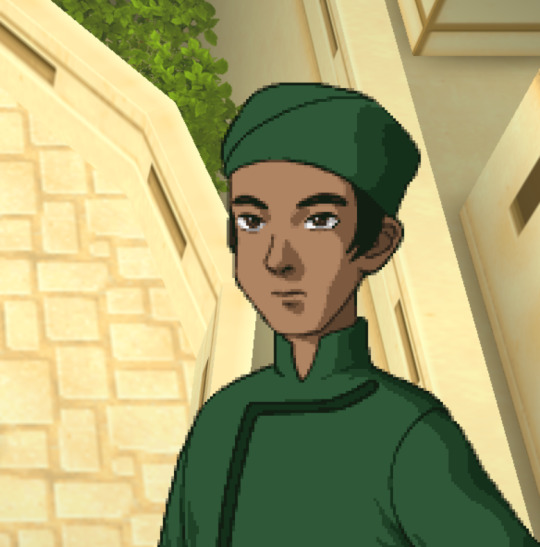

The common headdress for men in Omashu are turbans. They wear it the same style of the Cabbage Man which @atlaculture has matched it to a Khăn Vấn, a vietnamese turban:

The turban does have a similar shape, but depending the style, the Khăn Vấn can be wrapped like a headband that shows hair in the back, unlike the Omashu turbans that wrap completely around the head. Turbans have a long history that spans many cultures and religions, so here are some other turbans I thought looked similar:

These are the Sikh turbans, also referred as a Dastār. This particular style shown in the example is called the modern Dumalla. I thought the wrapped style was similar to the turban design in the game.

Another kind are the Islamic turbans found in South and South East Asia, such as Indonesia, Malaysia, and Bangladesh. The turban can come in different colors and patterns (I found only white ones for the examples, but I've seen green, yellow, and checkered before).
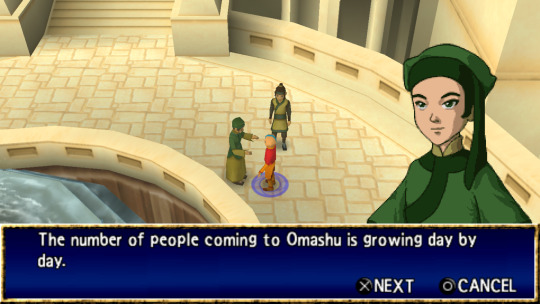
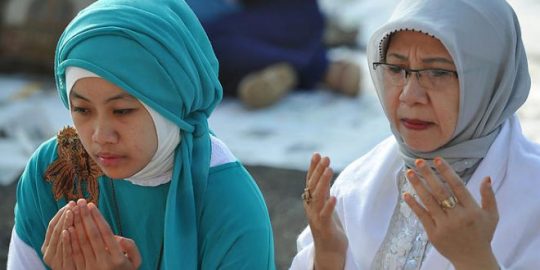
The women in Omashu also wear head coverings and this one in particular reminded me of the hijab style I've seen Indonesians wear.
Another cultural reference @atlaculture covered is how King Bumi's rock candy he encased Sokka and Katara with is like the rock sugar used in Asia. The method of developing rock sugar, or Misri, was invented in India and is the oldest refined form of sugar. It's used as candy or a sweetener for milk and tea. In Karnataka, it's served with water for guests in the summer.

Lastly, Bumi's name has ties to South and South East Asia. @cyndaquillt has already done a wonderful post going into Bumi's name from a South Asian view:
Bhumi (भूमि, pronounced bhoo-mi) is a Sanskrit word that means ground. The root of the word is Bhu (भू) which means earth.
There's also @ririsasy additions, that Bumi is the Indonesian word for Earth. In Indonesia, Bumi is a name usually given to males, while Bhumi is a name commonly given to Indian women, and is the name of the goddess of Earth in Hinduism.
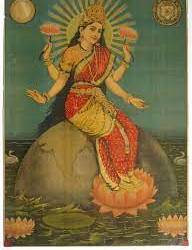
There's many overlaps between these cultures and more, but overall Omashu leans towards a more South Asian/SEA setting than East Asian compared to the rest of the Earth Kingdom. Any additions or corrections are welcome!
#some of these references are a biiit stretched#because of atla's pan-asia setting#but whats so fun is the mix of culture#that occurs in real life as well#and i really like the idea of Omashu being south asian/sea inspired#to give the EK some variety#like how some of the villages zuko and iroh go to resemble korea or vietnam#atla#atla the game (2006)#king bumi#game sense
441 notes
·
View notes
Note
I know you don't usually do these kinds of posts, but you're probably one of the most implicated in black history month people that I follow so I wanted to ask you, as I already value your opinions in Acotar, what do you think of the documentary where actual historians claim Cleopatra was a black woman? Lately, this has been a pretty active topic on my fyp on TikTok, and I wanted to know a black woman's perspective on this.
Thank you in advance, and if you usually don't answer these questions or don't want to answer this one, I'll totally understand, and there's no problem at all.
I didn’t know there was a new documentary out, but when I saw the name Cleopatra I automatically sighed because I knew what was coming. This is a subject a know a little 🤏🏾 about, actually, because I researched it a bit myself in my last year of high school (and stopped because of the uh. NASTINESS associated with this particular subject) and though it’s been a few years I remembered some main, basic things, and I wanted to check a few things first.
At best, in the most CHARITABLE interpretation as far as I in my limited knowledge can tell, it would be correct to say that’s it’s POSSIBLE that she MAY have been mixed Black because, though she was part of the GREEK Ptolemaic dynasty that ruled Egypt (Ptolemy being one of Alexander the Great’s generals who got the Egyptian portion of his empire after Alexander died), that’s on her fathers side; her mother’s exact ethnicity isn’t known. Not that this won’t stop the hoteps from running off and claiming her and all of ancient Egypt as Black though So some have ***speculated*** that her mother—and thus Cleopatra—may have potentially been part Egyptian (and that goes into the issue of deciding that the “Egyptian” in this instance had to have been Black rather than MENA but that’s again a whole other can of worms). BUT it’s more likely that her mother was Greek due to the uh, PRACTICE™️ of inbreeding and it not being common for the dynasty to marry Egyptians. So it’s more probable that she was fully Greek/Macedonian and not part Egyptian, much less part Black. (Also some historians speculate she may have had Persian blood? I guess? Again it’s a can of worms, not something i’m digging deep into because of the nastiness that you often stumble across) Unless there’s a new study confirming her mother’s identity or something that I missed, it’s simply incorrect to claim that Cleopatra was undeniably Black, because though it is ***possible*** she most likely ***wasn’t.***
But this topic really upsets me, because there are LEGITIMATE Black kingdoms and empires who were mighty and well developed and powerful like the Aksumite empire and kingdoms of Kongo and Loango and the Great Zimbabwe empire and the empires of Ghana and Mali and Songhay and the Ashanti kingdom and the WHOLE SWAHILI COAST THAT WAS INVOLVED IN THE INDIAN OCEAN TRADE ROUTE and they had their own great rulers, their own kings and queens and emperors and empresses, their palaces and castles, their own cities and towns, their own complex civilizations and dynastic royal families that deserve the attention Cleopatra and ancient Egypt get. They were erased—and Egypt was not—by white people to prop themselves up as the only race capable of forming civilizations and advanced societies as a means of justifying colonization and imperialism to “civilize” the rest of the world and as a result many of those other empires have been erased from our education system here in the states and many people cling to ancient Egypt as proof that we’re not inferior and aren’t savages like white people claim due to believing that since Egypt’s in Africa it had to have been mostly Black when Egypt, and the Ptolemaic dynasty and Cleopatra in PARTICULAR, are literally the worst example that could’ve been chosen and were the only African kingdom spared erasure FOR A REASON.
Anyway, I don’t like it, it’s disingenuous and does US wrong because we need to give that energy to other African kingdoms that need and could use the fame Egypt + Cleopatra get, and we deserve a better education system to teach us this stuff. I hope this answers your question? And I don’t mind any kinds of asks 🥰
#I get the desire to claim Egypt because I remember in high school a racist white guy asked why Africans didn’t build their own civilizations#And that’s what sent me researching in the first place so I truly get the frustration but black women we can do BETTER#ask#anon#cleopatra#egypt#africa#racism#Don’t come at me in my inbox yall#antiblackness
1K notes
·
View notes